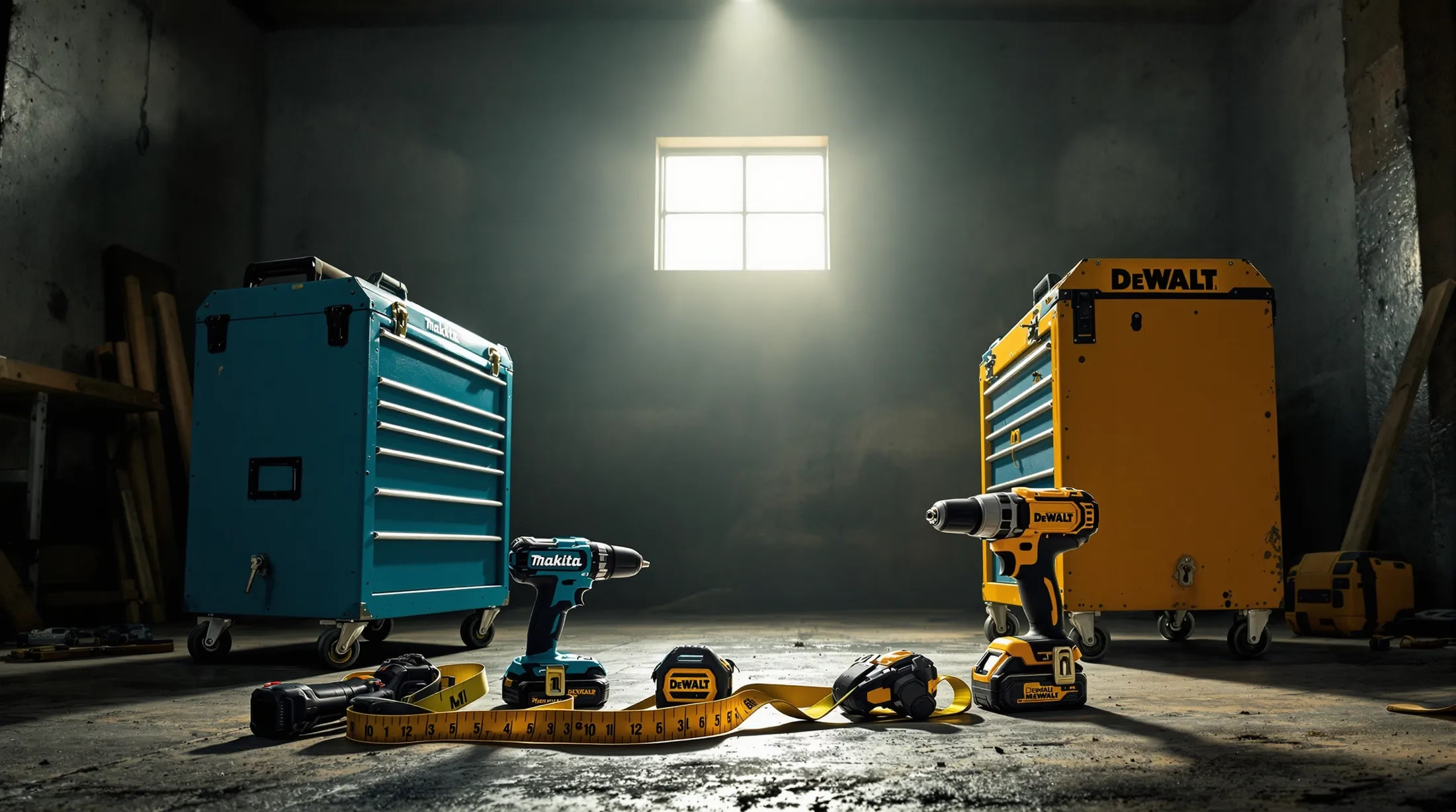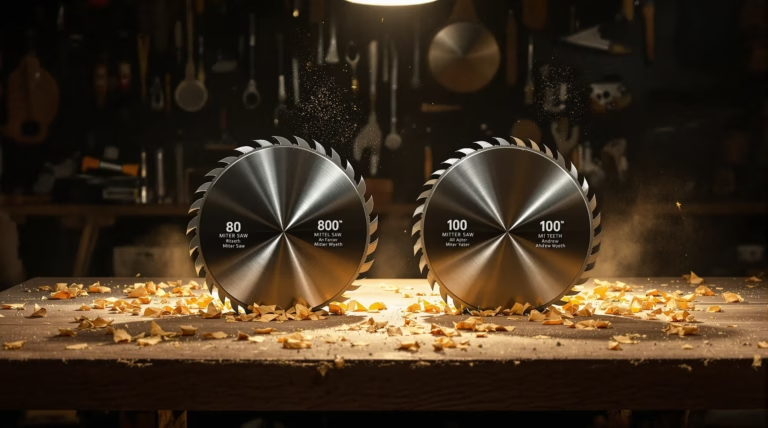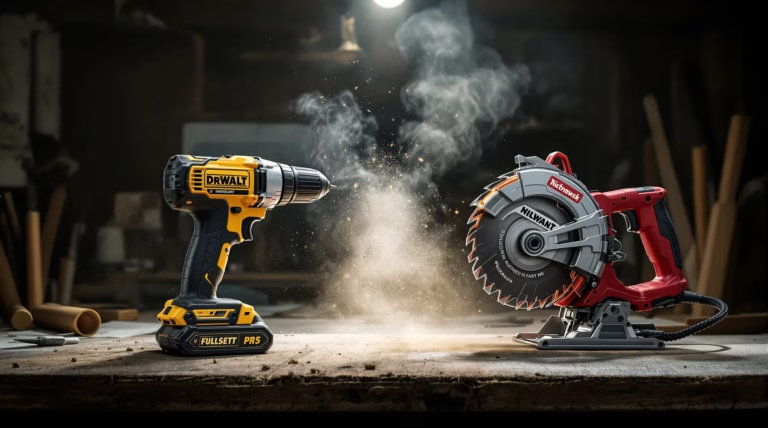Makita vs Dewalt: Which Brand Reigns Supreme?
Looking to make a smart investment in power tools? The eternal debate between Makita and DeWalt continues to shape purchasing decisions for both professionals and DIY enthusiasts. Let’s dive into a comprehensive comparison of these industry giants to help you make an informed choice for your specific needs.
Overview of Makita and Dewalt Brands
In the competitive world of power tools, Makita and DeWalt stand as two titans that consistently dominate the industry landscape. These brands have earned their reputation through decades of innovation, quality manufacturing, and dedicated customer service, making the Makita vs DeWalt debate one of the most discussed topics among professionals and DIY enthusiasts alike.
Both companies have carved out loyal followings based on their distinct approaches to power tool design and functionality. While DeWalt typically excels in raw power and speed, making it a favorite for heavy-duty construction work, Makita is often praised for its exceptional comfort, precision, and user-friendly design. The price point also differentiates these brands, with Makita generally offering more affordable options compared to DeWalt’s premium pricing structure.
History and Market Presence
Makita’s journey began in 1915 as an electric motor sales and repair company in Japan. The brand evolved significantly in 1958 when it introduced its first electric planer, marking its entry into the power tool market. By 1969, Makita had launched its first rechargeable power tool, cementing its reputation for innovation.
DeWalt’s history traces back to 1924 when Raymond DeWalt perfected the radial arm saw. The company was later acquired by Black & Decker in 1960, but it wasn’t until 1992 that the brand underwent a significant transformation with the launch of its revolutionary cordless tool system.
| Aspect | Makita | DeWalt |
|---|---|---|
| Global Presence | 8 manufacturing facilities, 40+ countries | Strong North American presence |
| Market Share | Dominant in Asia and Europe | 40% of North American professional market |
Product Range Comparison
When examining the Makita vs DeWalt product catalogs, both manufacturers offer extensive lineups that cater to diverse user needs, though with distinct specializations. DeWalt boasts an impressive array of over 200 products in its 20V Max line alone, complemented by their innovative FlexVolt series that seamlessly transitions between voltages.
Tools and Equipment Offered
- DeWalt Strengths:
- Heavy-duty construction tools
- High torque and speed performance
- FlexVolt technology (20V/60V compatibility)
- Robust hammer drills and impact drivers
- Makita Advantages:
- Superior battery life and charging times
- Extensive outdoor and garden tool selection
- Better ergonomics for extended use
- Precision-focused finish work tools
Build Quality and Durability
When investing in power tools, durability is often the deciding factor between brands, and both Makita and DeWalt have built sterling reputations in this department. Professional contractors and DIY enthusiasts consistently report that tools from both manufacturers can withstand substantial abuse in demanding work environments.
- DeWalt Durability Features:
- Robust housing construction
- Reinforced stress points
- Superior impact resistance
- Excellent performance in harsh conditions
- Makita Durability Highlights:
- Precision engineering
- Lower mechanical failure rates
- 5-10 year typical lifespan
- Consistent long-term performance
Material and Construction
The material choices and construction methods of both brands reveal distinct design philosophies. DeWalt emphasizes metal components in critical areas, utilizing magnesium and aluminum alloy housings for optimal strength-to-weight ratios. Their signature yellow casings feature impact-resistant polymers specifically engineered for construction site durability. The internal components showcase robust metal gearing and reinforced mounting points, contributing to their reputation for exceptional durability.
| Construction Aspect | DeWalt | Makita |
|---|---|---|
| Housing Material | Magnesium/aluminum alloys | Composite materials |
| Internal Components | Metal gearing, reinforced mounts | Precision-fitted components |
| Durability Focus | Impact resistance | Dust protection |
Makita’s approach combines precision assembly with durable materials, featuring composite housings that balance weight reduction and structural integrity. Their attention to component fitting and motor assembly results in tools that maintain accuracy over years of service. The bearings, bushings, and internal mechanisms show superior dust resistance, crucial for longevity. While DeWalt may have a slight edge in surviving major impacts, Makita tools typically experience fewer internal failures and maintain consistent performance longer.
Performance Metrics Evaluation
The operational characteristics of both brands cater to different work requirements. DeWalt tools excel in raw power output and speed, delivering impressive torque for heavy-duty construction tasks. This high-torque performance gives them a distinct advantage when working with resistant materials or prioritizing rapid completion.
- DeWalt Performance Highlights:
- Superior torque output
- Excellent speed capabilities
- Optimal for heavy-duty tasks
- Rapid work completion
- Makita Performance Advantages:
- Extended operational lifespan
- Faster battery charging cycles
- Longer runtime between charges
- Better weight-to-power ratio
Power and Efficiency
The power-to-efficiency ratio represents a crucial performance indicator. DeWalt’s reputation centers on delivering exceptional torque, particularly in their drills and drivers for high-resistance applications. However, this power advantage often comes with increased battery consumption and tool weight.
Makita’s engineering prioritizes operational efficiency alongside power delivery. Their brushless motor technology achieves superior power conservation, resulting in extended runtime per charge. The 18V and 36V platforms maintain strong performance while offering improved comfort during extended use. While DeWalt might provide higher speed in short-burst applications, Makita tools excel in sustained performance and precision work, making them ideal for professionals requiring all-day usability and consistent results.
User Reviews and Testimonials
Professional tradespeople and DIY enthusiasts reveal fascinating contrasts between these power tool titans. Long-term Makita users consistently report exceptional tool longevity, with documented cases of 8-year-old devices outperforming newer DeWalt equivalents. The standout features most appreciated by Makita users include:
- Lightweight, ergonomic design
- Extended battery life
- Significantly faster recharge times
- Consistent performance over years
DeWalt advocates emphasize the brand’s superior performance in demanding conditions. Their tools, while heavier, demonstrate remarkable resilience in extreme environments – notably preferred in Antarctic operations where durability proves crucial. This division in user preferences suggests that specific work requirements, rather than brand superiority, often dictate tool selection.
Customer Satisfaction and Experiences
| Aspect | Makita Users | DeWalt Users |
|---|---|---|
| Primary Strengths | Precision work, ergonomics | Heavy construction, demolition |
| User Experience | Reduced fatigue, balanced weight | Robust feel, confidence in demanding tasks |
| Maintenance | Cost-effective repairs | Higher repair costs, durable construction |
Checkatrade member surveys reveal that professionals focusing on precision work consistently choose Makita, praising the tools’ balanced weight distribution and cleaner cuts. One carpenter noted significantly reduced fatigue after transitioning to Makita’s 18V and 36V platforms while maintaining excellent performance standards.
DeWalt excels in heavy construction sectors, despite some battery life concerns. Their tools’ substantial build quality particularly appeals to users requiring maximum durability. The repair economics factor shows Makita’s advantage in maintenance costs, though both brands maintain strong overall satisfaction ratings among their target users.
Warranty and Customer Service
DeWalt’s warranty coverage significantly outperforms Makita’s offerings, providing superior long-term value. While both manufacturers offer three-year standard warranties, DeWalt extends additional benefits:
- Seven-year warranty on select tools
- Lifetime warranty against manufacturing defects
- 90-day satisfaction guarantee with full refund option
- Comprehensive coverage for professional use
In contrast, Makita maintains a more conservative 30-day return policy with discretionary refund decisions. This warranty disparity represents a clear DeWalt advantage, potentially justifying their higher initial investment through enhanced long-term protection.
Support and Service Quality
DeWalt’s support infrastructure, backed by Stanley Black & Decker’s extensive network, provides readily accessible service centers nationwide. Users consistently report efficient warranty claim processing and minimal resistance for legitimate issues, fostering strong brand loyalty among professionals who depend on minimal downtime.
Makita’s service experience varies by location, with some users reporting excellent support while others face longer wait times due to a limited service network. However, Makita maintains strong parts availability, even for older models. DeWalt’s comprehensive service infrastructure ultimately delivers more consistent support experiences, particularly valuable for professionals requiring reliable tool maintenance.
Innovations and Technology
Both brands showcase distinct technological strengths. DeWalt’s revolutionary FlexVolt platform enables seamless voltage transitions across multiple tools, reducing the need for separate battery systems. Their measured approach to product updates emphasizes refined, thoroughly tested designs over rapid iterations.
Makita excels in engineering efficiency, particularly in motor design and battery technology. Their innovations focus on practical improvements:
- Early adoption of brushless motor technology
- Compact, lightweight tool designs
- Rapid-charging batteries (30-45 minute full charge)
- Enhanced power-to-weight ratios
- Improved operational efficiency
Unique Features and Advancements
Makita’s technological prowess extends into specialized categories, particularly garden and outdoor equipment. Their unified battery platform creates exceptional value for users maintaining both workshop and landscape environments. The innovative AWS (Auto-start Wireless System) enables wireless communication between tools and dust extractors, automatically activating extraction when tools start – enhancing workplace safety and efficiency.
DeWalt focuses on professional durability and connectivity through their Tool Connect system, offering:
- Bluetooth-enabled inventory management
- Performance tracking capabilities
- Location tracking services
- FLEXVOLT ADVANTAGE technology
- POWER DETECT performance optimization
Battery Technology and Runtime
| Feature | DeWalt | Makita |
|---|---|---|
| Battery Platform | 20V MAX & 60V FlexVolt | 18V LXT |
| Capacity Range | 1.5Ah-12.0Ah | 2.0Ah-6.0Ah |
| Longevity | 1-2 years typical | Extended lifespan |
Comparing Cordless Options
Makita’s 18V LXT platform demonstrates exceptional charging efficiency, reaching full capacity in under an hour. Their batteries maintain consistent power output throughout discharge, delivering predictable performance during demanding workdays.
DeWalt’s FlexVolt system offers automatic switching between 20V and 60V operation, creating versatility for various applications. However, this sophistication brings practical considerations:
- Increased battery weight
- More complex charging requirements
- Higher initial investment
- Greater power availability for heavy-duty tools
- Enhanced cross-platform compatibility
Ergonomics and Usability
DeWalt embraces traditional industrial design with thicker grips and robust builds, emphasizing stability and secure handling for high-torque applications. Makita, conversely, focuses on sleek, compact designs with optimized weight distribution, particularly beneficial for overhead work and confined spaces.
Comfort and Usability for Extended Use
Makita’s attention to weight distribution and balance points significantly reduces fatigue during extended use, particularly noticeable in frequently used tools like drills and impact drivers. DeWalt counters with superior vibration control and enhanced grip texture, especially beneficial for high-impact applications and wet conditions.
Professional feedback consistently emphasizes personal preference, with experienced users like Jeff Owens noting Makita’s superior handling during extended use. For optimal tool selection, hands-on testing remains crucial, as subtle differences in grip design and weight distribution significantly impact long-term user experience.
Conclusion: Strengths and Weaknesses
After comprehensive analysis, both Makita and DeWalt demonstrate distinct advantages in professional power tools. DeWalt’s strengths include:
- Robust construction optimized for harsh job sites
- Higher power specifications for demanding applications
- Innovative FlexVolt technology (20V/60V compatibility)
- Extensive product ecosystem integration
- Superior durability for heavy-duty construction work
Makita distinguishes itself through:
- Exceptional engineering efficiency
- Lighter and more compact tool design
- Rapid-charging battery technology
- Consistent power delivery throughout discharge
- Extended battery service life
- Superior ergonomics for reduced fatigue
Making the Right Choice for Your Needs
| Choose DeWalt If You Need | Choose Makita If You Value |
|---|---|
| Maximum power output | Lightweight operation |
| FlexVolt system compatibility | Extended battery life |
| Tool Connect management features | Faster charging times |
| Heavy-duty construction focus | Ergonomic comfort |
Both brands maintain excellent quality standards and professional user satisfaction. The optimal choice depends on specific work requirements, personal preferences, and budget considerations rather than an absolute superiority of one brand over the other.



